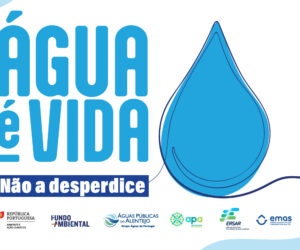The year 2023 ended up with 30.279 domestic violence crimes (CEO) reported to the GNR and PSP in accordance with the Domestic Violence Portal the responsibility of Commission for Citizenship and Gender Equality (CIG), where death resulted from 17 women, three men and two children.
Colonel of the GNR
Master in Law and Security and Homeland Security Auditor
Despite the number of 30.279 crimes are not yet the end, because according to the CIG, the number of occurrences reported to PSP and GNR may be higher compared to the values ââpresented, due to the existence of records prepared in the last quarter of the year 2023, and which were accounted for in 2024, It is noted that compared to the year of 2022, complaints suffered a slight decrease in 110 crimes.
There have been several articles that I have dedicated to the phenomenon of DV in recent years. 10 year old, having even proposed some measures that I consider would greatly contribute, for preventing and combating DV, whose first, would be the attribution of responsibility for the operationalization of the Teleassistance Service for DV Victims (STVD) to the Security Forces (FS), leaving to be under the purview of the IGC and the Portuguese Red Cross (CVP), not in this proposal a critique of how both institutions have managed to get the job done, but yes, because the closer the FS victims are to, the faster the response of these to emergencies, eliminating the intermediate, taking into account that the response to victims' calls is given by the FS, after passing through CIG and CVP.
A second measure would be the creation of Multidisciplinary Domestic Violence Risk Assessment Committees (CoMARVD), will like the Children Protection Committees and Youth in Danger (CPCJ), and just as there are in the UK, under the name Multi-Agency Risk Assessment Conferences (MARAC), the same being composed of representatives of all institutions and organizations that deal with the phenomenon of VD (education, social Security, Cheers, FS, authorities, ONG, etc.), under the supervision of the Public Prosecutor's Office (MP), positioning itself to intervene between the first-tier authorities and courts, as in the Child Protection System and Youth in Danger.
As CoMARVD, which are much much more than âvictim support officesâ existing in some Investigation and Criminal Action Departments, will have as their main task the analysis of all risk assessment forms, prepared by those involved in DV occurrences, particularly high risk, with the possibility to apply urgent measures to protect victims and removal of the attackers, less than 72 hours.
In addition to these two measures, we propose, in this article, the introduction into our legal system of the Victim Impact Statement, for being another instrument that will help victims of crime in Portugal, not only victims of DV, and whose use is current practice in Anglo-Saxon legal systems, namely the United States, Canada, United Kingdom, Australia and New Zealand, with the name âVictim Impact Statementâ, despite having different procedures in each of the countries mentioned.
The âVictim Impact Statementâ is a document in which a crime victim describes the physical impact, emotional, financial and psychological impact the crime had on her and her loved ones, frequently used during the trial of the aggressor, providing the Court with additional information to consider in determining the extent of the sentence, aiming to give the victim a voice and allow their perspectives and experiences to influence the outcome of the trial.
As already mentioned, This concept began to be formally integrated into Anglo-Saxon legal systems in the last decades of the 20th century., the introduction and acceptance of this practice varies according to jurisdictions, where in the United States, for example, The idea began to gain more prominence in the 1990s. 1970 and was formalized in other jurisdictions in the following years, of course Canada, where the use of the âVictim Impact Statementâ became more common from the 1990s onwards. 1980, so each country adopted this practice at different times, and the specific rules on how they are made and used, also vary from country to country.
In Portugal, there is no direct equivalent to the âVictim Impact Statementâ as it is known in the aforementioned legal systems, like in the United States or Canada, however, in Portugal, Victims have the right to be heard at any time during the criminal process.
The Code of Criminal Procedure therefore provides for the hearing of the victim at various stages of the process, allowing them to express their opinions, concerns and experiences, although it is not exactly the same as a âVictim Impact Statementâ, with the participation of victims in the judicial process in Portugal recognized and facilitated in accordance with the legal provisions in force.
The âVictim Impact Statementâ allows the victim to express themselves directly about the impact of the crime on their life, providing a sense of empowerment, providing the Court with detailed information about the physical impact, emotional, financial and psychological crime, that may influence the court decision, helping the Court to consider the extent of the harm caused when deciding on sentence, making the process more complete and equitable.
The âVictim Impact Statementâ recognizes and validates the suffering of the victim, giving it a more significant presence in the judicial process, contributing to more restoration-oriented approaches to justice, allowing victim and perpetrator to understand the impact and consequences of the crime.
These advantages of the âVictim Impact Statementâ vary according to legal practices in different countries, but in general, seek to balance justice by taking into account not only the crime itself, but also its impact on victims, It is therefore important to correctly write the âVictim Impact Statementâ, because it is a document of a personal and emotional nature, Therefore, the guidelines and instructions that we identify.
The document begins with a brief Introduction that must contain the identification of the victim, of the process and its relationship with the specific case. There should then be a part describing the impact, where the impact of crime in its various aspects must be detailed, like physics, emotional, psychological and financial, specific examples should be used to illustrate the real impact, making the statement more convincing.
The third point refers to the long-term consequences, describing the possible lasting consequences of the crime and how it affected the victim's daily life and relationships with third parties. The fourth point must include financial losses, including all information, namely medical expenses or lost wages. The fifth point lists any and all assistance needs, as psychological support, medical or financial, that the victim may have. The sixth point must include emotional expressions, the victim should not be inhibited from expressing emotions and feelings, as this can add a human dimension to the document. Ending the statement with a clear request to the court about what the victim considers a fair sentence. And like all documents, the âVictim Impact Statementâ must be carefully reviewed, to ensure clarity and precision and if possible, ask for guidance from a lawyer to support you in analyzing the document.
for these reasons, we consider that the âVictim Impact Statementâ could be a document to be introduced into the Portuguese legal system, because in other countries it has proven to be essential in the application of justice, helping the Court understand the impact the crime had on the victim before making a decision, It is also an important opportunity for your voice to be heard and to share your experience in an empowering way..

























